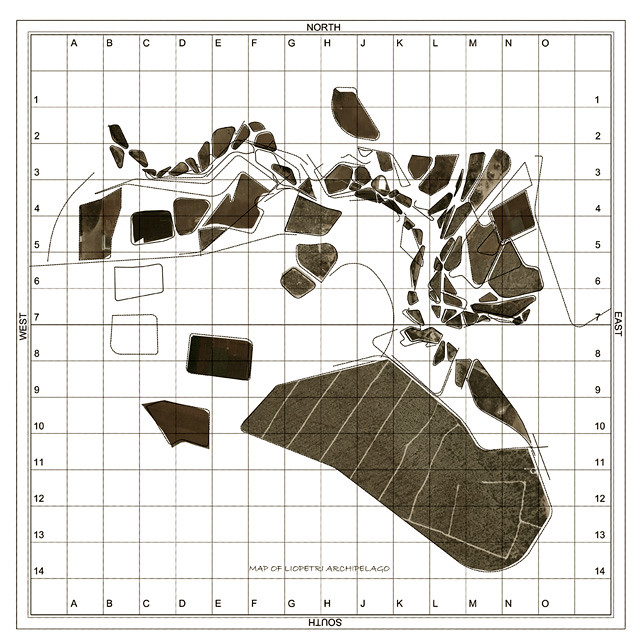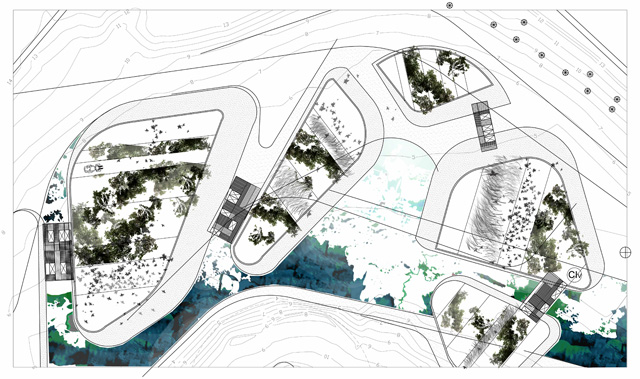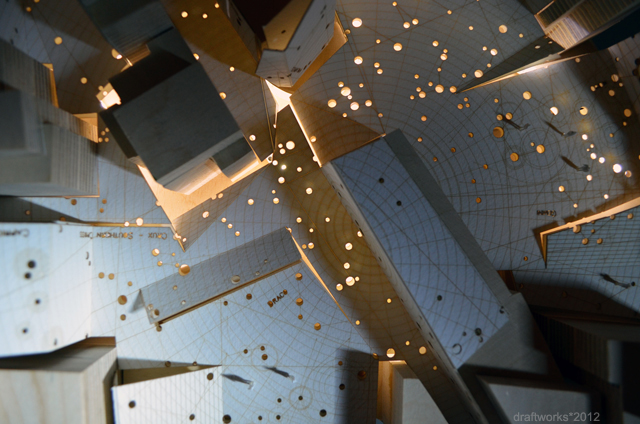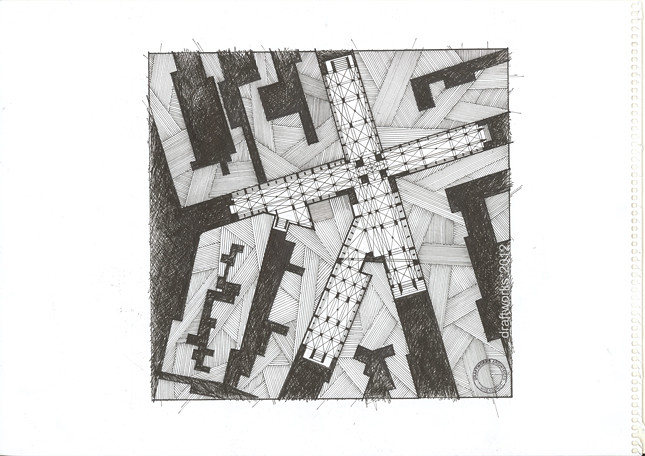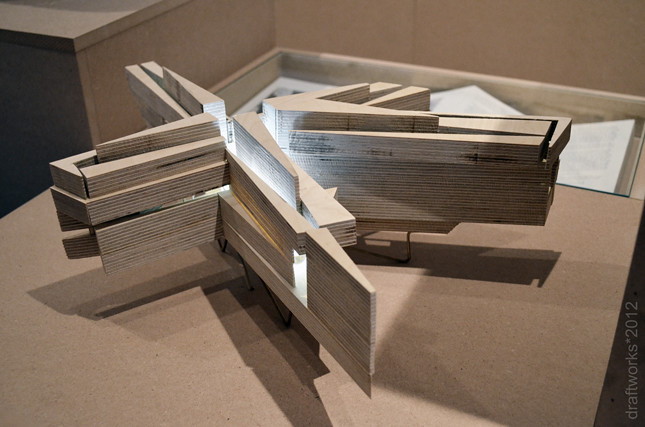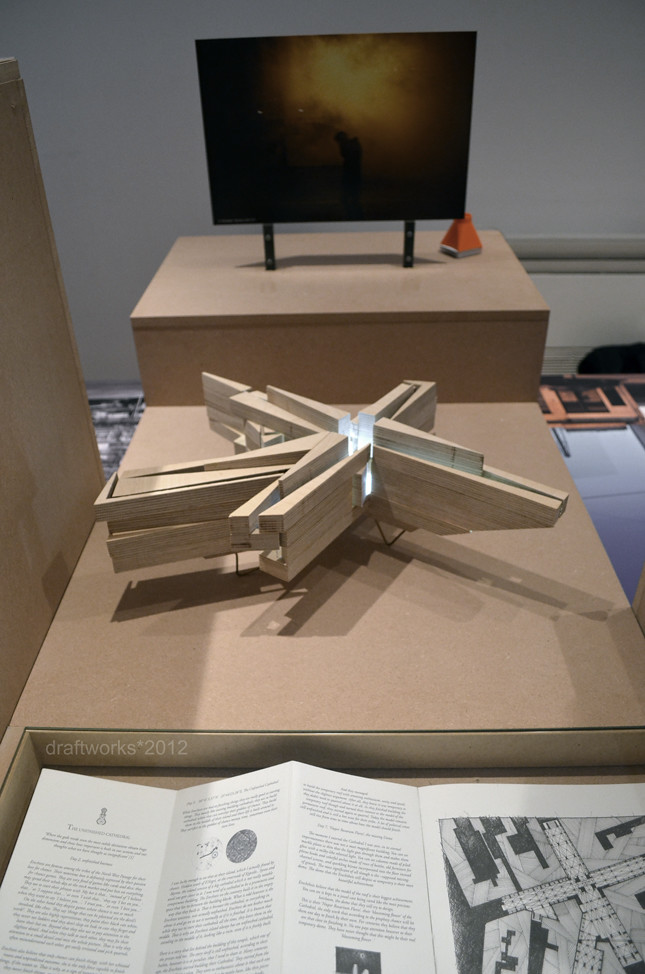‘Passive’
and ‘active’ tourism:
The bond with place.
In a
recent article the American economist Paul Krugman notes:
‘One of their [Greece’s] major exports is tourism. Greece exit [from Eurozone]
could create a very ugly scene for six months or a year, but after that there’s
tons of package tours of British lager louts [sic] going to the Greek isles. It
sounds awful, but compared with 50 per cent youth unemployment, maybe not so
bad.’[1]
The term ‘lager louts’ describes the
swarms of intoxicated tourists that every summer reach Greece, as well as
Cyprus and other countries of the European South and the Mediterranean. Krugman
uses this term, not with a purpose to underestimate this kind of tourists, but
to describe lively what he believes to be the fate of these countries,
especially in a climate of economic recession: The ‘lager louts’ that bring
easy and fast money are preferable to a local youth unemployment that reaches
50 per cent. Which, however, is the condition that this kind of tourism brings
along with it to the place that accommodates it?
This kind
of tourism is offered as a commodity product that promises to its consumer
-mainly young low or middle class people from some centre-European country- one
or two weeks of unrestricted hedonism and escapism. Whilst on the other hand,
it promises to the local community an inflow of currency, creation of new
working places and fast economic growth. What does though a growth based on
‘escapism’ mean? For the place that hosts it, this kind of tourism means the
creation of enclaves, cut off from the reality of the place, a kind of
‘thematic park’ or a ‘coastal Mall’ in which the tourist experiences a
simulated reality. The same, happens with similar enclaves destined to higher
incomes, where again a kind of ‘park’ is offered, only a much more luxurious
one. The result is, what Jean
Baudrillard calls simulation[2]
of reality, that is, a copy of the real, a simulation of it that becomes more
real than the prototype itself. The tourist experiences a ‘Cyprusness’, namely
a copy of Cyprus, that becomes as a condition more real than Cyprus itself. In
this condition, the interpretation of the place, the practical bond with it, is
either impossible or mediated by a simulation. [Fig.1]
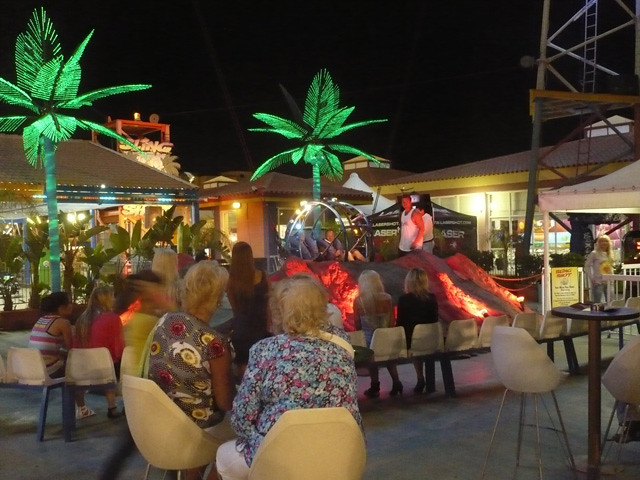

Fig.1: Amusement Park
(Luna Park) ‘Catapult’, Agia-Napa, Cyprus.
Author : OldMuzzle.Source : Wikimedia Commons
With this
article we don’t want to deny the importance of tourism as a national product
of Cyprus, or of other countries of the European South and the Mediterranean.
On the contrary, we admit the importance of the tourist industry, even the
present financial necessity of this kind of ‘fast’ tourism. Precisely for this
reason, however, we consider it important to place questions about the present
and the future of this industry, about its possible development, and, why not,
in terms of the market, for a qualitative improvement of its product. We then
draw attention to the need for a balance between the visitor and the place
under the umbrella of architectural design.
The
American sociologist Erving Goffman, in his ‘Frame Analysis’ theory refers to
the concept of ‘bracketing’[3],
namely the cognitive brackets that we put subconsciously during initiating or
terminating our conceptions of reality. In the world of Theatre for example,
‘bracketing’ refers to all the gestures that symbolically state that ‘now the
act begins’ or ‘now the act finishes’, like the change in lights or the draw of
the stage curtain. ‘Bracketing’ means the installation of a frame through which
we can perceive and interpret reality. This perception and interpretation of
reality however can be either imposed and passive or creative and active. In
cases of creative theatre for example, the viewer does not remain passive, but
participates in the construction of the ‘fictional world of the play’, by
consciously entering the temporal frame of the ‘bracketing’ and by
‘co-interpreting’ the fictional world together with the actors. On the occasion
of a tourist visit again a similar frame is constructed. Within the frames of a
limited time period, the visitor is converted into the viewer of a play. He
opens and closes the brackets within which he will be able to perceive and
interpret the reality of the place that he visits. In the case of the tourist
formation of ‘enclaves’ that we referred to above, this frame is artificial,
pre-determined for the visitor and limits his capacity to interpret the place
in his own terms, and by his own means. The visitor then is converted into a
passive viewer of the place, consuming thus an interpretation that he has not co-created.
We stress
here the need at the same time for a kind of ‘creative’ tourism. ‘Creative
tourism’ is about creating the conditions for an unmediated bond to be
developed with the place, as a relief from simulation. There are many new
categories of tourists that pursue experiences out of the box of massive
tourism and the consumption of a place as a product. There are new alternative
kinds of tourism, where, for example, one can experience nature and open a
dialogue with the place at the same time.
The ‘creative tourism’ consists of ‘practicing’ nature, namely actively
‘inhabiting’ nature, by paying the price of time, effort and personal
involvement of the visitor. Turning back into past forms of tourism, when the
category was not yet massive, it is interesting to look into how -when the term
‘tourist’ did not have the content we nowadays give to it- the one who
travelled to visit a place was called ‘traveller’ or ‘excursionist’. The traveller, many times ‘practiced’ nature, by
applying time and effort into understanding and interpreting it through the use
of art or narrative. Pausanias for example, the ancient Greek geographer and
traveller, through his narrations of his travels, brings to us lively images of
Antiquity, which at a degree, have constructed our own conception of it. Whilst
the sketches and images of the Mediaeval travellers many times even today are
considered important documents of the history of a place.
Designing infrastructure for the ‘creative
tourism’: Two cases
We refer
then to an incorporation of the tourist activity in each place, by developing an infrastructure of
practicing nature. By this we mean an involvement with nature, which won’t be
occasional but on the contrary will favour the dedication of time and effort
from the visitor. The question then is the following: How is this involvement
possible through architectural design and which are the tools? The last few
years in Cyprus there appears an initial interest from state and local
authorities for this kind of tourism. The most important expressions of this
interest are the architectural competitions, which call both for programmatic
ideas and for design expressions of these ideas in space. At this field of
architectural competitions there are many ideas that emerge and which can be
converted into interesting conditions of alternative tourism, if taken seriously
by the authorities. For this article we will use as case studies two examples
from our architectural practice[4],
as we believe that our experience of participating in such competitions, is the
most direct way to support our argument. For this reason, we will refer to two
proposals, which discuss how design can get the visitor involved with nature and develope a ‘common ground’ between him, the
visited place and the locals. These proposals are of two
different scales, the first project for the ‘Centre of EnvironmentalInformation’ at the salt lake of Larnaca[5]
being about an architectural scale and the second project for the ‘FishingHarbour and Park’ at Liopetri [6]
being about a wider planning scale.
In the
first case of the ‘Centre of Environmental Information’ at Alikes salt lake of
Larnaca, architectural design aims at the construction of a small-scale
infrastructure for initiating the visitor into the experience of the landscape.
The landscape of Alikes is unique, both for its natural significance, and for
its historical and cultural value. As a ‘Natura 2000’ protected area of 5
sq.km., a hospitable eco-system for many local and migrating birds, but also a
place of significant historical and cultural memory[7]
it could be the flagship of a ‘creative tourism’ movement for the wider area.
The Centre, with uses of recreation, information and education aims at this
kind of tourism. At the site we recognised a network of paths, while, as the
site is hidden into a small wood of conifers and bushes, the landscape is not
easily revealed. Om the contrary it must be discovered through gaps in the
clusters of trees and their foliages. [Fig.2]
In our proposal we took advantage of these two qualities as
well as the use of movement, the crossing passages and the selected views as
main elements of our design. As a result the visitor is not meant to perceive a
‘ready-made’ image of the landscape, but is offered the opportunity to
construct it by himself. This is made possible by his moving in space and the
urge to make choices, to discover corners and hidden views in order to find his
way. [Fig.3] Through
the Centre’s programme, the visitor is able to perceive at the same time
information for the natural and socio-historical context of Alikes.


Author: draftworks*

Fig.2: ‘Centre forEnvironmental Information’ at Slat Lake, Larnaca: Views through the trees
Author: draftworks*
Author: draftworks*
Architectural
design, in this case, aims at the construction of a ‘frame’ of perceiving and
interpreting the place, though the composition of partial views. This
composition is based on movement, which constructs an active relationship with
the place. At the same time the close association of the recreation space and
the space of cultural interest constructs a common ground between the visitors
and the locals. At this place tourism can get rid of stereotypes and take the form of a love for
nature, of a pilgrimage, of recreation, or just of curiosity. This renders the
relationship between place and tourism a multivalent experience.
The second
case of the ‘Fishing Harbour and Park’ of Liopetri[8]
is one of a combination between a natural environment and coastal eco-system
with some rare examples of recent vernacular architecture. [Fig.4] The natural environment of the
Liopetri River and the structures of the amateur fishermen make the place an
informal tourist destination. The interest of this area though lies in that
beyond a tourist destination is also a space of light activities, which, at
first look do not appear to be too much ‘tourist’ ones, like amateur boat-fishing and micro-cultivations. In our
proposal we pursued the active involvement of the visitor with the landscape,
through proposing the temporal occupation of the visitor with activities of
fishing, nature preserving and micro-cultivating organic species. We tested
this possibility through the idea of the ‘island’ as a unit of nature and at
the same time an attractor of tourist activity and a possible micro-production
of goods. As a result, a set of islands create an ‘archipelago’ of mixed nature
and human activity. [Fig.5] The archipelago creates a common ground for the
encounters of visitors with nature and with each other. The Archipelago, as a
design strategy, offers the frame for a temporal visit, as an outcome of
conventional tourism, but also offers the infrastructure for the development of
‘creative tourism’, through the involvement of the visitor with nature and the investment
of effort and time in his encounter with nature. In this way the ‘islands’,
either as ‘fishing islands’ or ‘cultivation islands’ are offered to the
visitors over a short or a long period to inhabit and exploit them. The ‘nature
reserve islands’ on the other hand, are islands of local protected natural
fauna and flora and they are also offered to individuals or groups of visitors
for purposes of education and familiarization with techniques of nature
preservation and protection. [Fig.6]
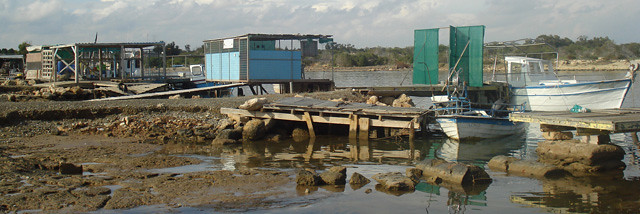

Fig.4: ‘Liopetri FishingHarbour’: Fishermen’s huts
Authors: draftworks*, AA+U
Fig.5: ‘Liopetri FishingHarbour’: ‘Archipelago’ Map
Authors: draftworks*, AA+U
This second example expresses a problematisation about a category of
active tourism, for which there is not yet a much grown interest in Cyprus. We
must, however, underline the interest of local authorities and the organizers
of the competition in ideas that had been submitted in the first -programmatic-
stage of the competition by the participating teams. The interest for these
ideas encouraged interventions like the correlation of nature protecting with
tourism, cultivation with tourism as well as fishing with tourism, which are
ideas not yet much discussed in a Cypriot context.
‘But isn’t that beautiful?’
Martin
Friedman narrates the following story about the American sculptor IsamuNoguchi:
‘In
1973, Noguchi was invited by the Indian government to built a park on a silt
river mound across the water from Bombay. There was only one problem with the
site, he learned –it vanished when the tide came in’
Friedman
transfers the words of Noguchi:
‘I
said, ‘well, how am I going to make a park when it disappears once a day?
They
said ‘But isn’t that beautiful? All the birds come to it’
‘It
just vanishes and a lot of fish come up there and a lot of birds come down to
get the fish. I thought ‘Oh well, the only thing to do, of course, is like in
the Indian Ramayana, to get the assistance of the animal kingdom. ‘So, I
said, let’s make three large circular pools in there. In digging out these
pools, you’d build up the land, and in the pools you’d have catfish and eel
farms, a good source of protein. That would be the economy of the place, you
see. Gradually the people who tended the eels and the catfish would bring their
huts out there’[9]
The above reference shows the way in which architectural design can
build the economy of a place, by putting forward its identity, contrary to a
design that converts the place into a commodity. This is possible even for
cases of countries of tourist-oriented economy, like Cyprus, on the condition
that the design of tourist infrastructure focuses on constructing the
experience of place or an eco-system that includes more than one actor.
In this effort the basic participating actors are two: On the one hand
there is the role of the governmental and local authorities, who, like the
Indians of the story, owe to embrace the peculiarity of a place and risk by
providing opportunities to innovative ideas. Unfortunately, the initial
interest of the authorities in many cases remains in suspension, on the
occasion of the recent economic recession or the difficulty of decision-making.
Even though the embracement of the ‘creative tourism’ actually triggered the
development of local areas, as international examples have shown, many relevant
ideas and feasible plans remain in suspension. On the other hand there is the
role of the professionals that form space and especially the architects, who
are trained to recognise the peculiarities of a place and to produce innovative
ideas. Like in the case of Noguchi[10],
architects many times are called to convert an -at first sight- ‘disadvantage’ into an ‘advantage’ by
unlocking the creative forces of a place.
As a conclusion, there can be a hopeful
message: there is a growing number of people internationally who choose kinds
of ‘creative tourism’ that develop bonds with the place as alternative forms of
tourism. This is about a category that we could also call ‘eco-tourism’, as it
puts forward the need for creating eco-systems where all different actors seek
their distinct role. It mainly falls on the authorities to take initiatives,
embrace this friendly form of tourism and convert it into an opportunity for
economic growth, and at the same time a qualitative re-branding of a place.
[1]
Interview with economist Paul Krugman: ‘Greece will
leave Euro zone within 12 months’ The Independent, 30 May 2012
http://www.independent.co.uk/news/world/politics/interview-with-economist-paul-krugman-greece-will-leave-eurozone-within-12-months-7804753.html
[2]
Jean Baudrillard. ‘Simulacra and Simulations’, in Selected
Writings, ed Mark Poster. Stanford University Press, 1998, pp.166-184.
[3]
Erving Goffman, ‘Frame Analysis, An
Essay on the Organisation of Experience’. Northeastern University Press,
Boston, 1986
The word bracketing can be interpreted as ‘putting
into brackets’
[4] draftworks*architects, Christiana
Ioannou, Christos
Papastergiou, www.draftworks.eu
[5] ‘Centre for Environmental Information’ at salt-lake of Larnaca, Cyprus.1st prize at the architectural competition, draftworks* architects, project
team: Christiana
Ioannou, Christos Papastergiou. Project
assignment by the Environmental Agency. At present the project remains in suspension at the stage
of tenders. 2009-2011
[6] ‘Fishing
Harbour at Liopetri’, 3d prize at a two-stage architectural competition. draftworks*architects and AA+U. Project team: Christiana Ioannou, Christos
Papastergiou, Dr. Socratis Stratis, 2011-12
[7]
Close to the Salt lake of Larnaca there is the ‘Soultan Tekke’ mosque, an
important monument of Islamic culture. Till the 1980s the salt lake was a place
for salt extraction, an economic activity that was a source of income for the
local community for many centuries.
[8] In
cooperation with Dr. Socratis Stratis architect (AA+U)
[9] Martin Friedman, Noguchi's Imaginary Landscapes, Design Quarterly, No.
106/107, (1978), pp. 1+3-99 (p.51)
[10] Noguchi was not an architect but a sculptor. He however had a very
strong ‘architectural’ take on space.

